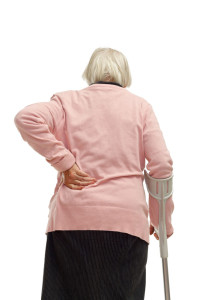Introduction
Osteoarthritis and degenerative arthritis are the same. Doctors have many synonyms for this disease: degenerative joint disease, degenerative arthritis, osteoarthritis or osteoarthrosis. But all of these names express the same. Regardless, they mean an inflammatory joint disease, which is the most common form of arthritis of the aging person.
Metabolic changes with osteoarthritis
Notably, there is a change in the metabolism of the aging joint: before osteoarthritis sets in the cartilage cells, which form a smooth joint surface, are not dividing and they stay at their best performance when compression and release alternate. Specifically, the nutrients and oxygen flow into the joint space and keep the lubrication of the joint originating from the lining of the joint (called synovium) in balance. Certainly, osteoarthritis is a disease of the aging, not by accident, but likely because hormones that supported joints during the younger years are no longer abundantly available in the aging person (see Ref. 8).
Pathophysiology of osteoarthritis
To put it another way, with the beginning of degenerative changes this balance breaks down and the cartilage cells start multiplying producing pathological proteoglycans. Also, cytokines from the osteoarthritic process stimulate bone producing osteoblasts of the underlying bone to produce more brittle, stiffer bone and bone spikes (osteophytes) at the edges of joints.
Complications of osteoarthritis
Frequently this new bone formation is prone to micro-fractures and subsequent callus (new bone) formation. Eventually there is cyst formation underneath the diseased osteoarthritic joint, which X-rays can visualize. Ultimately, the joint dries up and there is loss of cartilage islands. In essence, this leads to joint pain and stiffness and to swelling of the lining of the joint (called synovitis). All in all, in the end stages the synovial membrane can be so thick and edematous that the joint is extremely swollen and baggy, and there might be an accumulation of joint fluid, called effusion. To sum up, eventually bone rubs on bone, which feels like a joint crackling to the patient or the examining hand of the physician who calls this “crepitation”(Ref. 1). Return to the distribution table above to learn more regarding osteoarthritis.
Newer insights into osteoarthritis
In the last few years it has become apparent that there are two processes that occur parallel.
First, there is chronic inflammation that leads to the changes described above. These seem to come from a lack of omega-3 fatty acids in our diet, which leads to a lack of pro-resolution molecules such as lipoxins, resolvins and protectins. On balance, this causes chronic inflammation.
Secondly, there is an immune process going on where sensitized T killer cells attack the smooth surface of the joint (called “hyaline cartilage”). In this case, what had sensitized the T cells was the fact that bits and pieces of the aging cartilage broke off and were now seen as foreign to the body. However, with supplementation of both undenatured chicken cartilage and omega-3 fatty acids osteoarthritis can be stabilized naturally as is described under this link.
Particularly, a mix of glucosamine and chondroitin has been shown to be beneficial for arthritis: https://nethealthbook.com/news/arthritis-responds-to-glucosaminechondroitin/
References
1. The Merck Manual, 7th edition, by M. H. Beers et al., Whitehouse Station, N.J., 1999. Chapter 52.
2. ABC of rheumatology, second edition, edited by Michael L. Snaith , M.D., BMJ Books, 1999.
3. EL Cain et al. Clin Sports Med 2001 Apr;20(2):321-342.
4. B. Sears: “Zone perfect meals in minutes”. Regan Books, Harper Collins, 1997.
5. Goldman: Cecil Textbook of Medicine, 21st ed.(©2000)W.B.Saunders
6. Ferri: Ferri’s Clinical Advisor: Instant Diagnosis and Treatment, 2004 ed., Copyright © 2004 Mosby, Inc.
7. Rakel: Conn’s Current Therapy 2004, 56th ed., Copyright © 2004 Elsevier
8. Thierry Hertoghe, M.D.: “The Hormone Solution – Stay Younger Longer With Natural Hormone And Nutrition Therapies.” Three Rivers Press, New York, 2002








